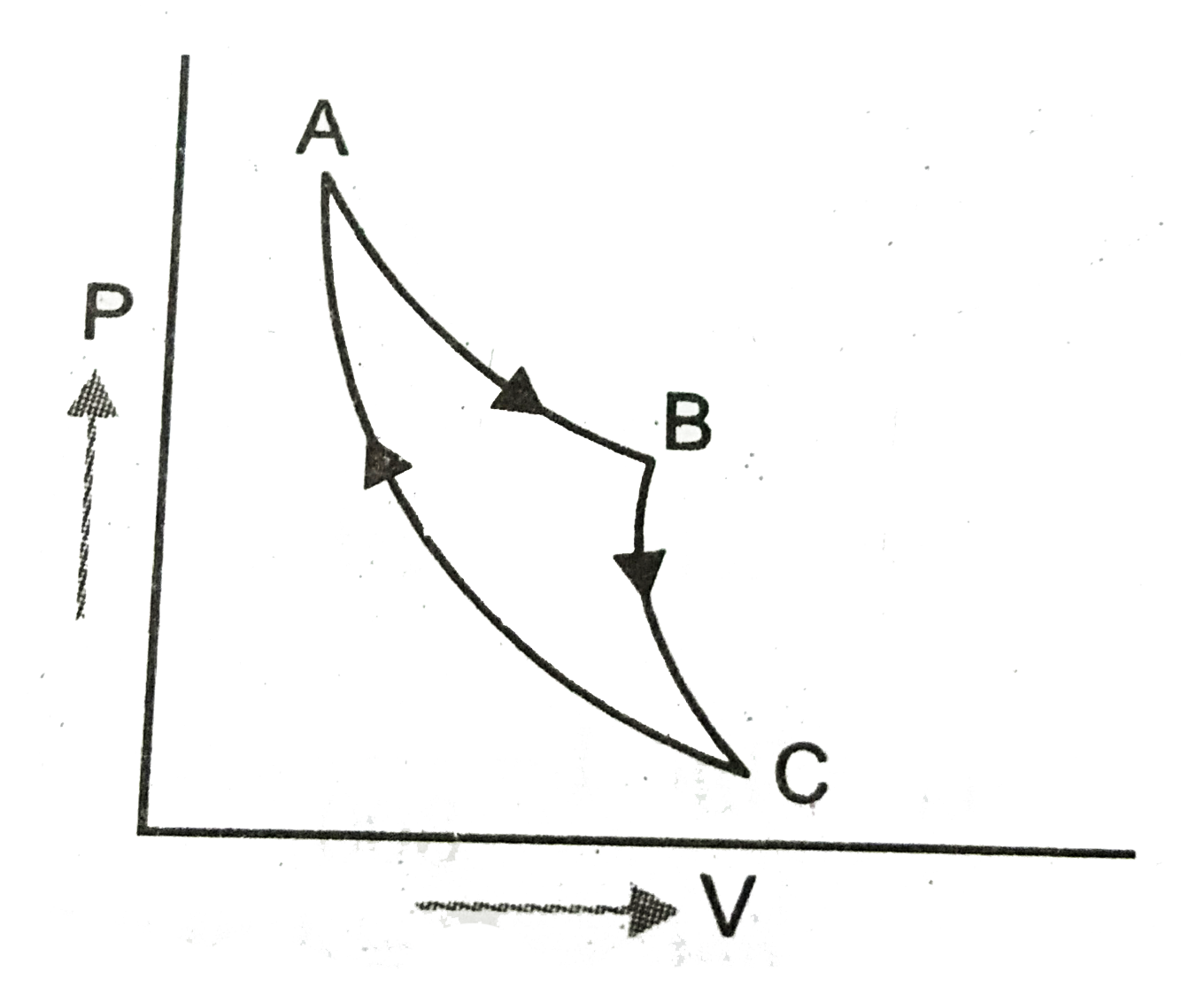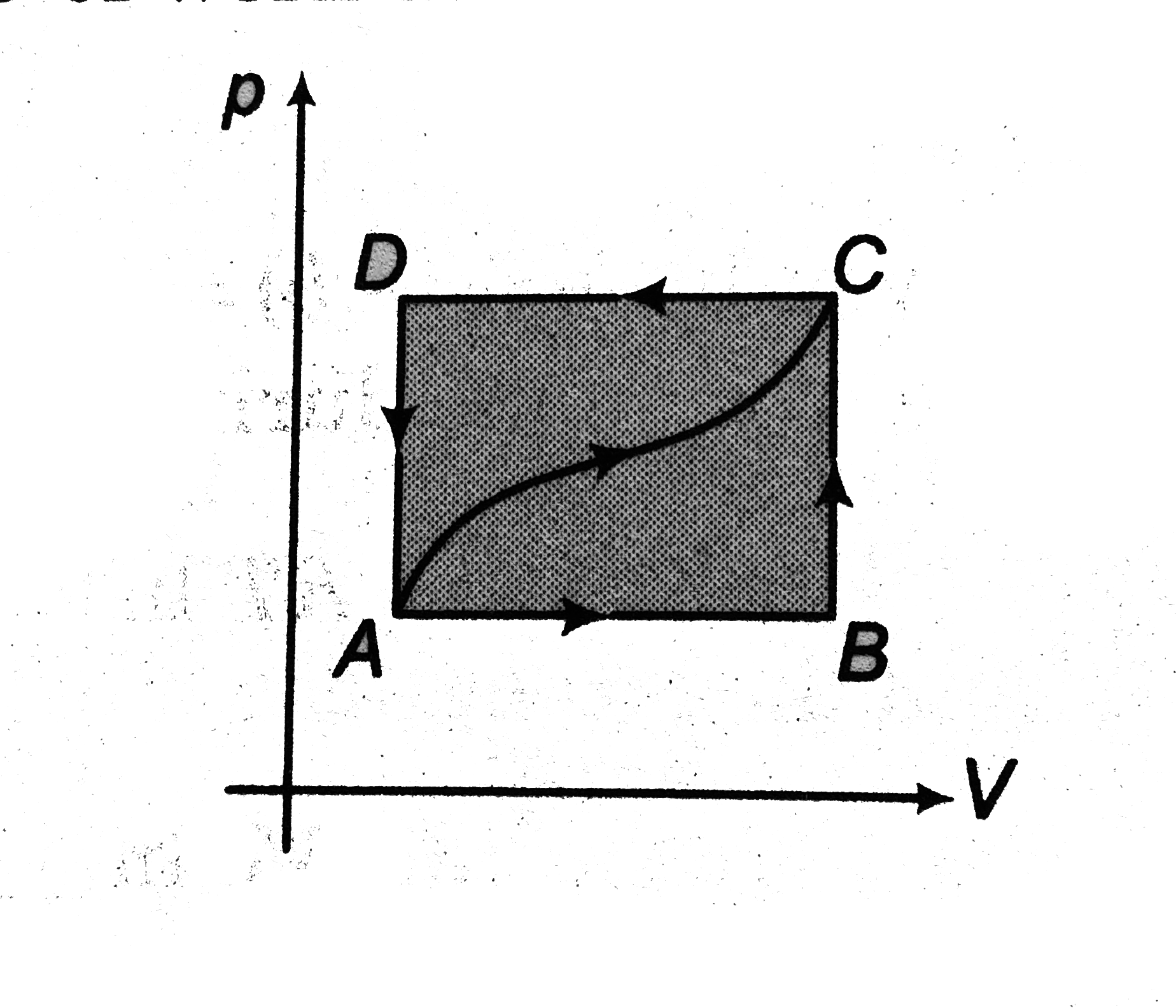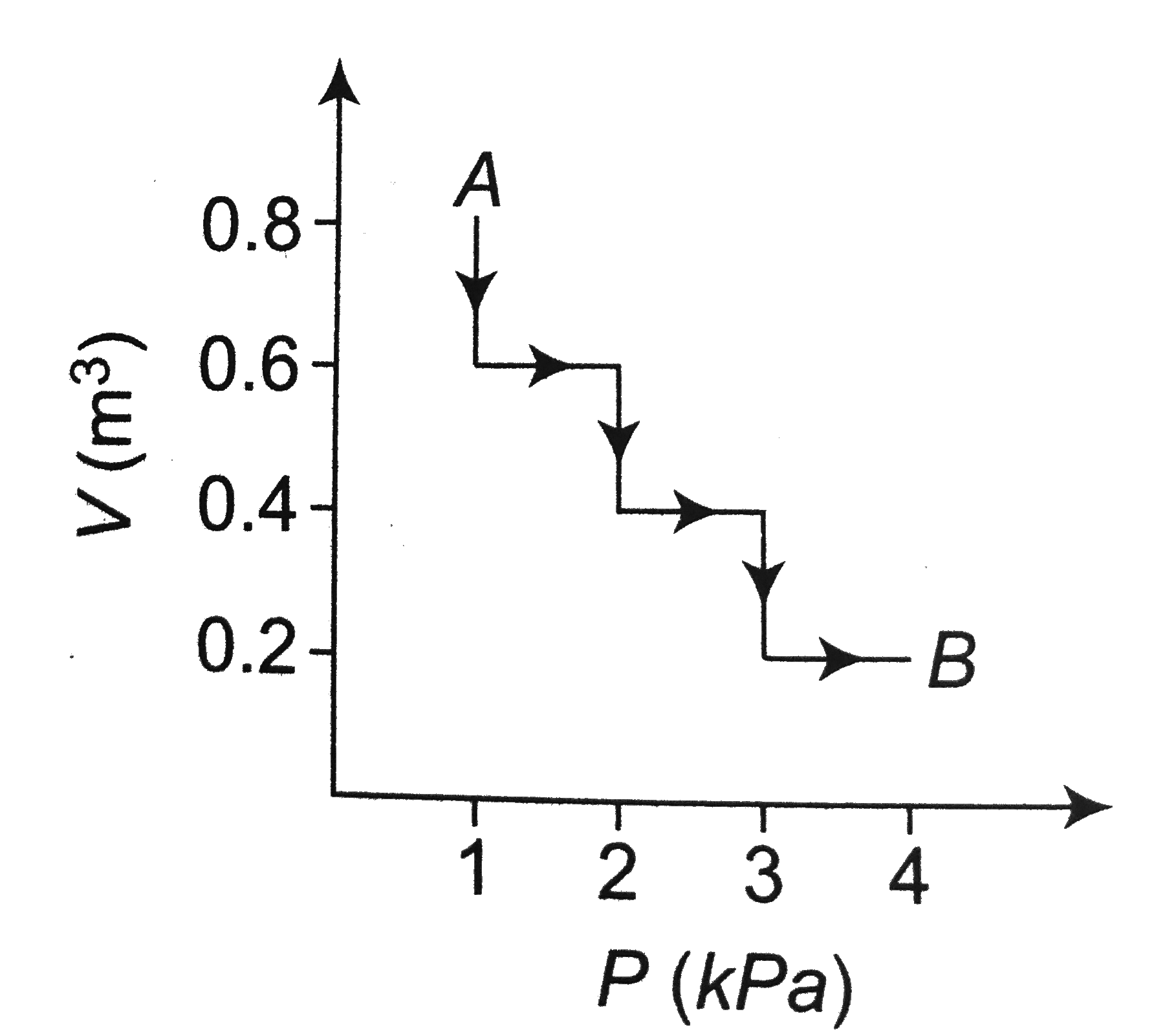An ideal gas expands isothermally along AB and does 700J of work. How much heat does the gas exchange along AB? The gas then expands adiabarically along BC and does 400J of work. When the gas returns to A along CA, it exhausts 100J of heat to the surroundings. How much work is done on the gas along this path?

(a) AB is an isothermal process. Hence,
ΔUAB=0
and QUAB=WAB=700J
(b) BC is an adiabatic process. Hence.
QUBC=0
WBc=400J (given)
ΔUBC=WBc=−400J
ABC is a cyclic process and internal enery is a state function. Therefore,
ΔUWho≤cyc≤=0ΔUAB+ΔUBC+ΔUCA
and from first law of thermodynamics,
QAB+QBC+QCA=WAB+WBC+ΔWCA
Substituting the values ,
700+0−100=700+400+ΔWCA
∴ ΔWCA=−500J
Negative sign implies that work is done on the gas.
Topper's Solved these Questions
- KINETIC THEORY OF GASESBook:BANSALChapter:KINETIC THEORY OF GASESExercise:Solved Example
Explore 17 Videos
- KINETIC THEORY OF GASESBook:BANSALChapter:KINETIC THEORY OF GASESExercise:Practice Exercise
Explore 3 Videos
- HEAT TRANSFERBook:BANSALChapter:HEAT TRANSFERExercise:Exercise
Explore 89 Videos
- UNIT DIMENSION, VECTOR & BASIC MATHSBook:BANSALChapter:UNIT DIMENSION, VECTOR & BASIC MATHSExercise:Exercise
Explore 10 Videos
Similar Questions
When a gas expands along AB, it does 500J of work and absorbs 250 J of heat. When the gas expands along AC, it does 700J of work and absorbs 300J of heat.

(a) How much heat does the gas exchange along Bc?
(b) When the gas makes the transition from C to A along CDA, 800J of work are done on it from C to D. How much heat does it exchange along CDA?
View SolutionA heat engine is 20% efficient. If the engine does 500 J of work every second, how much heat does the engine exhaust every second ?
View Solution
Knowledge Check
One mole of an ideal gas expands isothermally to double its volume at 27∘C . The work done by the gas is nearly
A2760calB414calC1380calD600calA gas receives an amount of heat equal to 110 J and performs 40 J of work. The change in the internal energy of the gas is
A70 JB150 JC110 JD40 JAn ideal gas is taken along the path AB as shown in the figure. The work done by the gas is
 A600JB1200JC−600JD−1200J
A600JB1200JC−600JD−1200J
A sample of an ideal diatomic gas is heated at constant pressure. If an amount of 100 J of heat is supplied to the gas, find the work done by the gas.
View SolutionIn reference of above figure, no heat exchange between the gas and the surrounding will take place if the gas is taken along -

View SolutionA gas expands against a constant external pressure so that the work done is 607.8J. The work done in litre atmosphere is
View SolutionAn ideal gas receives 10J of heat in a reversible isothermal expansion. Then the work done by the gas:
View SolutionA sample of ideal gas (γ=1.4) is heated at constant pressure. If 100 J of heat is supplied to the gas the work done by the gas is
View Solution